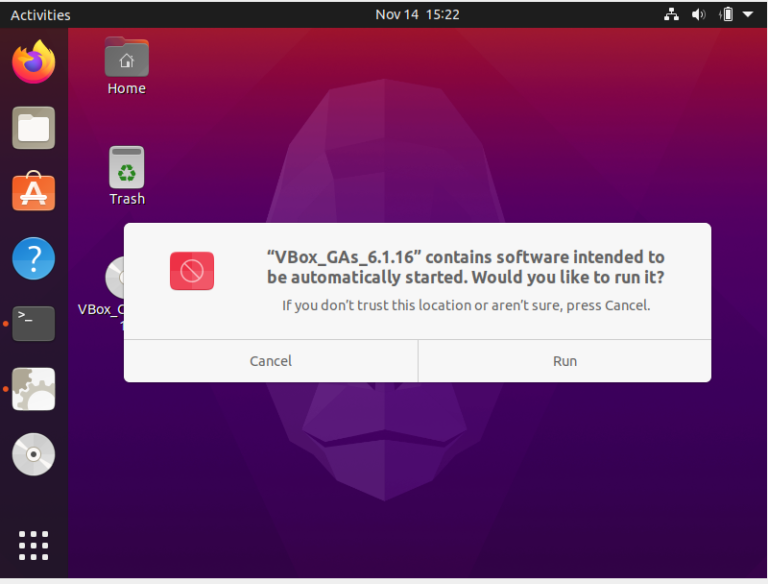

Once there, you can follow the next steps as shown below. Make sure that Ubuntu is fully installed inside VirtualBox and that you can boot properly to the desktop. Installing guest additions inside ubuntu and many popular linux distros is actually quite easy and requires a few clicks and commands only. These details have been explained on virtualbox website. done.Without it, you would probably have to work with a standard resolution like 1024x768 as the default virtual machine does not support every possible video resolution. done.ĭoing non-kernel setup of the Guest Additions. done.īuilding the VirtualBox Guest Additions kernel modules. Removing existing VirtualBox non-DKMS kernel modules. Removing existing VirtualBox DKMS kernel modules. Uncompressing VirtualBox 4.1.22 Guest Additions for Linux. If it does, the VirtualBox Guest Additions have been successfully installed. Once the process is complete, check that the output resembles that shown below. (Could not find the X.Org or XFree86 Window System.) You can safely ignore the error below if it appears during the installation process: Installing the Window System drivers.

Mount the CD-ROM and install the VirtualBox Guest Additions: $ sudo mkdir /mnt/cdrom The VBoxGuestAdditions.iso file is usually located in the /usr/share/virtualbox/ directory on Linux, in the C:\Program Files\Oracle\VirtualBox directory on Windows and the Contents/MacOS directory of the VirtualBox package on Mac OS X. This action simulates inserting a CD-ROM that includes the tools. Restart the virtual machine: $ sudo rebootįrom the virtual machine menu, select the “Devices -> CD/DVD Devices -> Choose a virtual CD/DVD disk file” option.

packages with the proper kernel_version shown by the previous command: $ sudo apt-get -y install dkms build-essential linux-headers-VERSION Remember to replace the VERSION placeholder with the kernel version from the previous command. Install some needed dependencies as shown below. To install VirtualBox Guest Additions, follow these steps:Įdit the virtual machine settings and from the “System” tab, add a new CD-ROM device to the machine.Ĭheck the current kernel version: $ uname -a


 0 kommentar(er)
0 kommentar(er)
